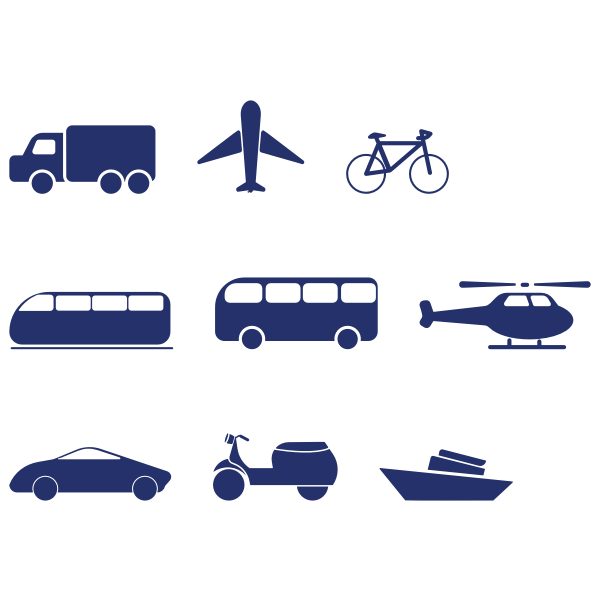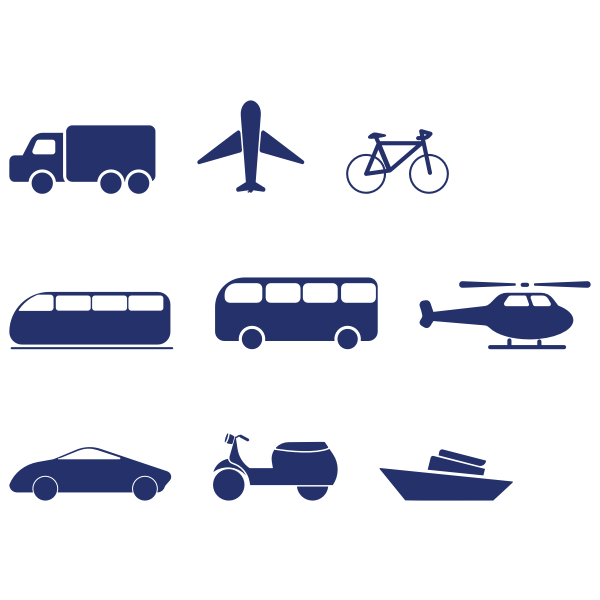Revolutionizing the way our roadways and power grid integrate is at the heart of the ASPIRE Engineering Research Center.
The aim of ASPIRE is to create a transportation network that wirelessly charges all sizes of electric vehicles (EVs) through innovative grid-connected pavements.
The benefits of ASPIRE include reducing emissions, improving air quality, and equitable access to EVs and fast charging infrastructure for all.
K-12 Lesson Activity Pairs:
- Air Quality-Climate-Transportation Connections Curricula
- Module 1: Introductory Design Challenges
- Module 2: Introduction to the Engineering Design Process
- Module 3: Environmental Justice StoryMap Collection and Mousetrap Car Design Challenge
- Module 4: 3D Design & EV Dream Car Workshop and Carbon Footprint & Transportation Activity
- Module 5: Circuits & EV Motor Workshop and Fuels Debate
- Module 6: Model EV Design Challenge and EV Design Expo
What is ASPIRE?
Advancing Sustainability through Powered Infrastructure for Roadway Electrification (ASPIRE) is a National Science Foundation funded project to transform our transportation and grid systems.
ASPIRE’s vision is to eliminate range and charging as barriers to electric vehicle use. Solutions include wireless and plug-in charging system that are integrated into roadways, parking, and the grid. ASPIRE is preparing the workforce and communities of the future to understand, operate within, and design for sustainable electric infrastructure.
Explore ASPIRE Engineering Curricula:
K-2 Resources
Air Quality and Transportation:
- Cars and Air Quality Connections Cars and Air Quality Connections
This lesson introduces students to the concepts of air pollution from transportation and related health effects, plus vehicle solutions to help reduce air pollution and improve air quality.
- Air Quality and Particulate Matter Air Quality and Particulate Matter
This activity introduces students to the relationship between air quality and wind. Students work together to learn about the color-coded Air Quality Index (AQI) chart that describes levels of air pollution for a primary transportation-sourced air pollutant—particulate matter (PM)— and what to do du...
Climate Change and Transportation:
- Climate Change and Cars (K-2) Climate Change and Cars (K-2)

Students learn about climate change and what affects it. Students learn a basic understanding of the greenhouse effect, the carbon cycle, global warming, and how transportation can contribute to global warming. Students work together to understand how various forms of transportation have costs and b...
- Carbon Emissions: Carl’s Carbon! Carbon Emissions: Carl’s Carbon!

This activity introduces students to the concepts of climate change and what affects it. Students work together to understand how various forms of transportation have costs and benefits, and which modes of transportation are better for the environment.
3-5 Resources
Air Quality and Transportation:
- Internal Combustion Engine, Electric Vehicles & Air Quality Connections Internal Combustion Engine, Electric Vehicles & Air Quality Connections
This lesson introduces students to the concepts of air pollution from transportation and related health effects, plus vehicle solutions to help reduce air pollution and improve air quality.
- Air Quality and Weather Connections Air Quality and Weather Connections
Students will explore the pattern between air pollution levels and weather conditions in this activity. Students work together to learn about the color-coded Air Quality Index (AQI) chart that describes levels of air pollution for two main transportation-sourced air pollutants—particulate matter (PM...
Climate Change and Transportation:
- Climate Change and Cars (3-5) Climate Change and Cars (3-5)

Students learn the concepts of climate change and how cars can contribute to climate change. Students learn the basics of the greenhouse effect and the carbon cycle. They also learn how transportation affects our atmosphere. Students work together to understand how various forms of transportation ha...
- Carbon Emissions: Pardon My Carbon! Carbon Emissions: Pardon My Carbon!

This activity introduces students to the concepts of climate change and how cars can contribute to it. Students work together to understand how various forms of transportation have costs and benefits, and which modes of transportation are better for the environment.
Middle School resources are coming soon!
Creative Engineering Design is an introductory-level, project-based learning high school course that explores engineering concepts and real-world engineering applications through the lens of sustainable electric vehicle (EV) technology.
This teacher-tested modular curriculum offers a flexible instructional schedule and embeds the engineering design process, engineering skills (basic CAD, circuits & motors), and transportation-related environmental justice themes (air quality, pollution, public health), which culminates in a team-based model EV final design challenge.
Creative Engineering Design aims to broaden students' understanding and interest in engineering through the innovative work of the ASPIRE Engineering Research Center team whose goal is to develop and implement sustainable widespread roadway electrification that is accessible and equitable for all communities.
Module 1
Introductory Design Challenges:
- Paper Tower Design Challenge Paper Tower Design Challenge
Students work in small groups as civil engineering teams to design and construct model towers out of paper with minimal teacher guidance on completing the challenge. Each team is given limited supplies (three sheets of paper, tape and scissors) and limited time (one class period), paralleling the re...
- Efficient Car Design Efficient Car Design
Students learn how the aerodynamics and rolling resistance of a car affect its energy efficiency through designing and constructing model cars out of simple materials. Students are encouraged to iterate on their models, designing and testing different cars to create the most efficient model vehicle....
- Straw Bridges Straw Bridges
Working as engineering teams, students use the engineering design process to plan, create and test model bridges using plastic drinking straws and tape as their construction materials. Their goal is to build the strongest bridge with a truss pattern of their own design, while meeting the design crit...
Module 2
Introduction to the Engineering Design Process:
- Engineering Design Process & Design Thinking Engineering Design Process & Design Thinking
After informally using the various Engineering Design Process (EDP) steps in the previous design challenges, students are formally introduced to the seven-step EDP: Ask, Research, Imagine, Plan, Create, Test, and Improve. Students are also introduced to Design Thinking to help them creatively proble...
- Creative Crash Testing Creative Crash Testing
Students utilize the full Engineering Design Process (EDP) as they become next-generation engineers working on the safety feature for passenger vehicles. They are challenged to design or improve an existing passenger compartment design/feature so that it better withstands front-end collisions, prote...
Module 3
Environmental Justice StoryMap Collection and Mousetrap Car Design Challenge:
- Environmental Justice StoryMap Collection Environmental Justice StoryMap Collection
The series of five Environmental Justice (EJ) StoryMaps explores the connections between air quality, transportation, and engineering. The EJ StoryMap collection provides background knowledge from reliable sources to build students’ understanding of concepts presented in a visual and interactive for...
- Mouse Trap Cars Mouse Trap Cars
Students design, build, and test mousetrap cars as they apply the Engineering Design Process (EDP) in this individual engineering design challenge. After researching design ideas, students build and test their mousetrap car prototypes (first model). Students then iterate (modify) their design and ma...
Module 4
3D Design & EV Dream Car Workshop and Carbon Footprint & Transportation Activity:
- Tinkercad 3D Design & EV Concept Car Workshop Tinkercad 3D Design & EV Concept Car Workshop
Students follow a guided engineering skills workshop presentation using the free online Tinkercad web app to design a model 3D EV concept car design. Tinkercad offers students an introduction to learning basic computer-aided design (CAD) skills. Teachers can create and manage classes, activities, et...
- Carbon Footprints and Transportation Carbon Footprints and Transportation
Transportation plays a sizable role in our greenhouse gas emissions with transportation contributing over 33% of CO2 emissions. Electricity generation is the other major contributor to CO2 emissions, with over 36%. A person's transportation and day to day electrical consumption decisions make up a b...
Module 5
Circuits & EV Motor Workshop and Fuels Debate:
- Tinkercad Circuits & EV Motor Workshop Tinkercad Circuits & EV Motor Workshop
Students follow a guided engineering skills workshop presentation using the free online Tinkercad web app learning the basics about circuits, using a simulator to create circuits, and applying these skills to build a model EV electric motor. Tinkercad offers students an opportunity to build their ci...
- Transportation Fuels Debate Transportation Fuels Debate
Student teams learn about transportation fuels, then are assigned to represent the different fuels. Working cooperatively, the students develop arguments on the merits of their fuel over the others. One debate will be conducted on fuels for personal vehicles.
Module 6
Model EV Design Challenge and EV Design Expo:
- Model EV Design Challenge Model EV Design Challenge
Students collaborate creatively in teams (2-4 students) to design, build, test, and iterate a model electric vehicle (EV) car that runs on a battery-powered electric motor circuit. Students apply and integrate the engineering design process, forms of energy (electrical, chemical, mechanical), and re...

